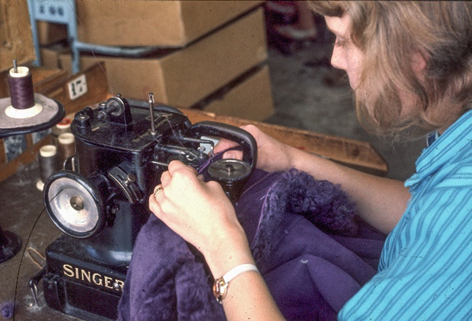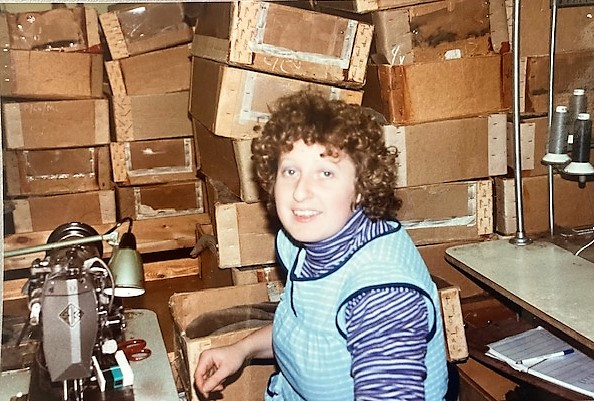We used to work on a conveyor belt, and somebody passed the work down the conveyor belt down there and then the room was over there – the buffalo-ers and all that. And then there were times when the line would start up with “There’s a hole in my bucket dear so and so,” then when it came to the next line, the room would sing it and then we would sing it. And then sometimes, we had different words put in it, as you can imagine.
[Judith, Morlands]

Photo: Howard Stone
They had their own cutter in the sample section, where they would try out new designs. The cutter would cut for samples and then they had the main cutter who would cut the coats in the main section.
[Shirley, Baily’s]

Photo: Howard Stone
And when you got timed, you’d take your time, and when you’re on fixing, it was amazing how often the cotton broke – hmmm – Strange that innit?
[Judith, Morlands]
Photo: Judith Kenniston

We made the white sheepskin numnahs as well, ordinary white sheepskins, short haired sheepskin ones for under saddles. And, we also made the bear skin ones. They were thick – really heavy skins. When I was stitching them, I tried not to imagine – where they came from.
[Fran, Morlands and Baily’s]

Photo: Fran Truscott
I was a coat stitcher – I did buttonholes, pockets, side seams. And then I went on to do the coats that would go off up to London and I made the whole coats.
[Caroline B, Morlands]

